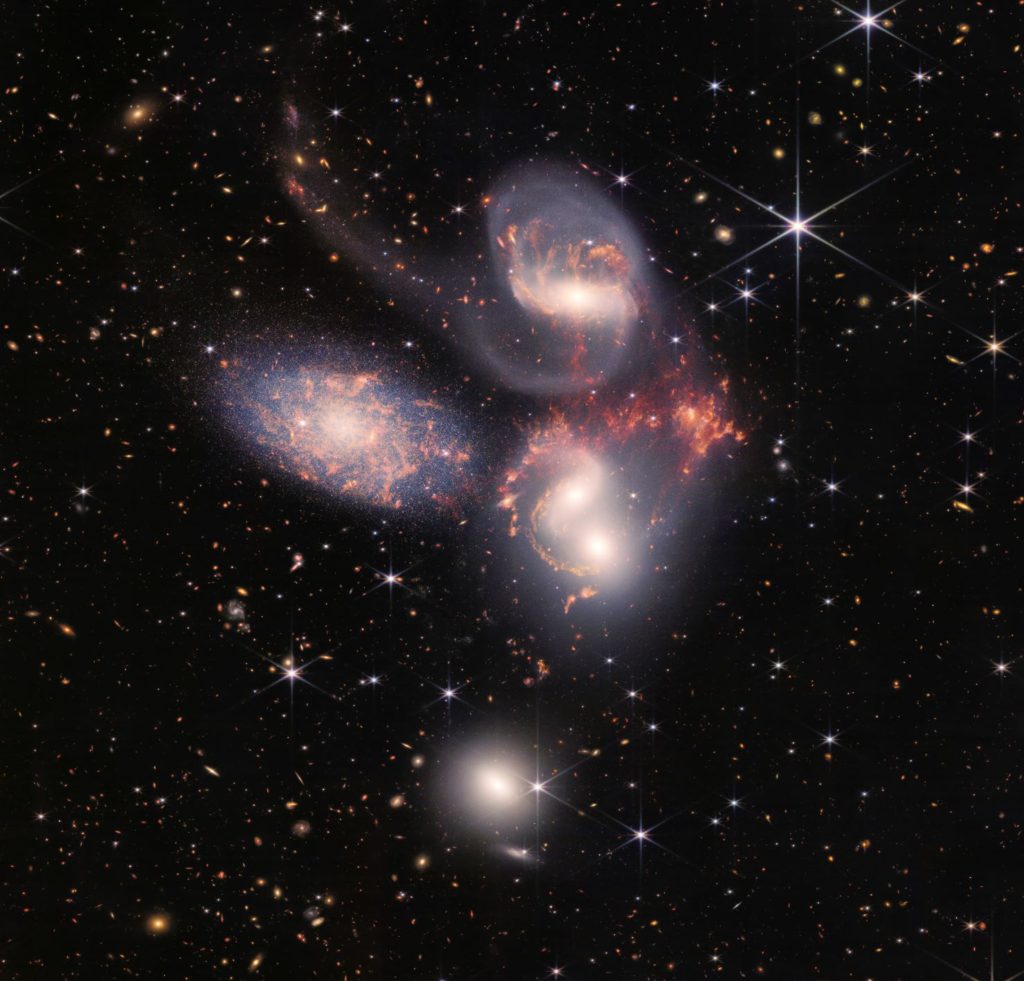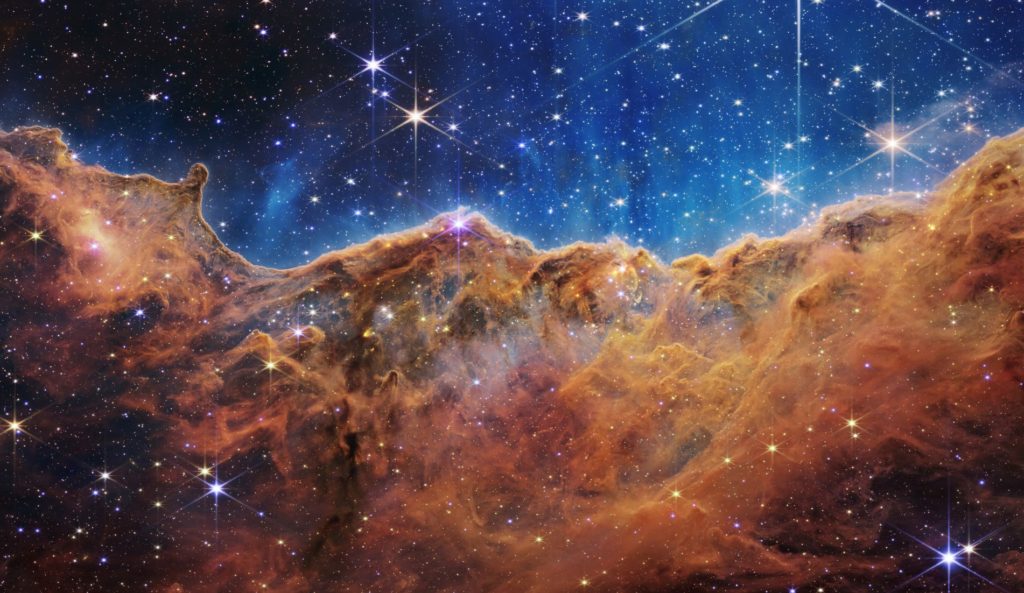As a writer, most people know me as a purveyor of words and stories, but I occasionally geek out here on scientific topics, like the Fibonacci Sequence, space exploration, and the Big Bang. I’ve been combining my love of writing and science in picture books drafts about the Mars rovers and the Voyager spacecraft. My hope is to bring these stories, both fiction and non-fiction, to readers starting next year!
When NASA released its first wave of images from the James Webb Space Telescope (JWST) on my birthday last week, it felt like the universe was giving me the best birthday present ever: awe and perspective. The above image is known as the First Deep Field. From our earthly perspective, the amount of space we’re looking at in the image is the size of a grain of sand held up to sky at arm’s length (so a very, very, very, very tiny amount).
Many of the reactions to this image were similar to my own of amazement and excitement, but I did see a few less-than-enthusiastic responses. One in particular was along the lines of not getting why people were so excited about a picture of space looking like, well, space.
Without context (and President Biden’s press conference on this image was not exactly illuminating as to the significance of this image), I totally understand the “so what?” reaction. So what is the significance?
First of all, the First Deep Field shows that tiny patch of space in greater detail than we have ever observed before. There are a few stars from our own galaxy there, those are the bright ones that look like sparkly stars. They’re cool to look at, but from a scientific perspective, fairly ordinary. More interesting is that this single image shows a galaxy cluster that contains thousands of galaxies. Our own Milky Way galaxy contains somewhere between 100-400 billion stars, so this image is showing a whole lot of space stuff with an incredible level of detail!
Even more interesting are the distorted-looking galaxies that have a kind of smudged appearance. Due to a phenomenon called gravitational lensing, light can bend around objects and be magnified. So those smudged galaxies are behind other galaxies and are at a much greater distance than we’d normally be able to see.
The thing about light is that it’s very fast, but the universe is so vast, light can travel for a very long time before reaching us here on Earth. Our sun is about 8 light-minutes away, so the sunlight you see right now (please don’t look directly at the sun and damage your eyes!) is 8 minutes old. From Earth, we can only see the sun as it was 8 minutes ago. Light allows us to see into the past!
One distorted galaxy in the First Deep Field is 13.1 billion light-years away. So we’re seeing it as it was 13.1 billion years ago. The farther into the universe we can see, the farther into the past we can observe. This galaxy is so far away that we’re seeing to within 1 billion years of when the Big Bang occurred. And that will allow us to discover more about how the universe was formed–the history of literally everything we know!
That’s only a fraction of the exciting information that will come from this one image from the JWST. Gazing at an image of this tiny bit of space makes you realize how very vast the universe is, large on a scale that is hard to comprehend. There is so much space stuff out there, and we here on Earth are a “pale blue dot” in a soup of many, much larger dots.
At first that makes me feel small and insignificant. I’m one person of billions on Earth. Earth is one planet among countless others circling countless stars in the countless galaxies of the universe.
But then I think of how amazing it is that we’re here at all. In all of that space, we have our beautiful, bountiful planet Earth. I breathe in the oxygen and drink the water with my body that is made of stardust. And I sit here at my computer with a brain complex enough to contemplate the vastness of space and the history of the universe. So when a person shows skepticism about a picture of space looking like space, here’s what I have to say.
Images like this give people a sense of awe, both in the beauty of space and the vastness of it. It simultaneously makes us feel insignificant and helps us realize how special it is that we are here at all. At least that’s why I’m so excited. I hope you find something that excites you today!
I’ll leave you with a couple more awe-inspiring images from the JWST.

Credits: NASA, ESA, CSA, and STScI

Credits: NASA, ESA, CSA, and STScI




















